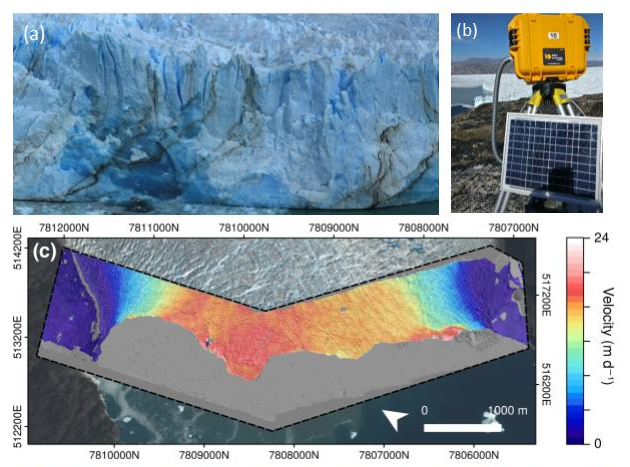Unravelling flow dynamics at glacier fronts: modelling and forecasting ice-cliff instability
- Academic lead
- Antonio Abellan (Earth and Environment)
- Co-supervisor(s)
- Sam Pegler (Mathematics), Sandra Piazolo (Earth and Environment), Poul Christoffersen (University of Cambridge), Daniel Koehn (University of Glasgow)
- Project themes
- Environmental Flows, Geophysical flows, Particulate flows, sediments & rheology
This timely and interdisciplinary project will be applying a series of advanced techniques in flow mechanics in order to shed light on glacier dynamics strongly contributing to sea level rise. More specifically, this project seeks a better understanding of the processes that control and lead to mass loss at ice terminations. The fundamental interactions between ice viscoelastic flow, flow velocity, inherited anisotropies, frontal advance/retreat and rates of ice loss will be investigated.
You will be using novel mathematical approaches, along with cutting-edge numerical modelling techniques to model differential glacier flow velocities and integrate key structural controls on glacier flow dynamics. These efforts will be informed by high-resolution experimental observations available to the student. To do so, you will model the control of large-scale anisotropies on the progressive breaking of ice chunks from their edge, including the possibility to capture the key spatial-temporal linkages between rates of ice loss, flow velocity, surface lowering and frontal advance/retreat.
The outcomes of this project will be of great interest not only in terms of a better understanding of glacier front dynamics, but also in terms of help refining global sea level rise scenarios. You will be using a variety of mathematical, numerical and analytical techniques in Fluid Dynamics, cryo-sciences and 3D observations that will considerably help develop your career. Publishing your results as first author in high impact scientific journals will be encouraged.

Figure: (a) glacier front and structural setting (crevasses) controlling ice flow and calving; (b) time lapse cameras installed in Store glacier, West Greenland and that will be used in this project for constraining glacier flow and calving; (c) example of Particle Image Velocimetry (PIV) for analysing motion of real glaciers from images at the same glacier, as captured in a project led by project supervisors (Chudley et al., 2019).
